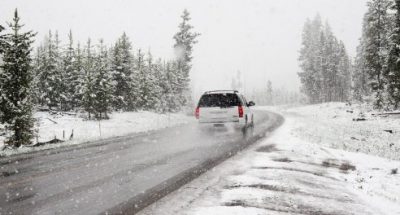
Across Canada, winter brings cold temperatures, snow, sleet, rain, and hail. Slippery roads, snowbank-covered sidewalks, and poor visibility make winter months the most dangerous time of year for drivers—especially new ones. In fact, almost 30% of all car accidents in Canada happen on icy or snowy roads.
To help you stay safe, here is a list of some of the most common car accidents during winter:
Rear-End Collisions
Rear-end collisions are a common accident, year-round. With added ice and snow on roads, this accident happens much more often. Icy roads reduce traction and make it difficult for drivers to stop. To avoid a rear-end collision, it’s important to take slippery road conditions into consideration. When stopping at a stop sign or intersection, stop by slowly applying the brake, and give extra room between your bumper and the back of the car in front of you.
Sliding through Intersections
Icy, snow-covered roads are particularly dangerous around intersections. It’s important to give yourself plenty of time to stop, and to avoid running through late yellow lights. You should also be extra vigilant of other drivers. Even if you’re being as safe as possible, cars coming from the other direction may slide through the intersection.
Fishtailing
Fishtailing occurs when you lose traction on a slippery road, and results in the back end of your car drifting from side to side. This type of accident can happen backing out of your driveway or at highway speed. The most dangerous part about fishtailing is the natural reaction to want to jerk the steering wheel back into place to correct your position. This motion can lead to further loss of control, driving into the oncoming lane, or rolling. If you feel your car fishtailing, take your foot off the brake and gently steer into the direction of the skid.
Accidents Caused by Reduced Visibility
If you’ve lived in Canada for at least one winter season, you’ve likely experienced driving or riding in a car through a snowstorm. It’s extremely dangerous. Blowing snow, sleet, and hail can reduce visibility significantly. Common accidents caused by poor visibility include colliding with inanimate objects, highway accidents, and driving into oncoming traffic. The simplest solution to avoiding this type of accident: stay home! It’s always worth waiting for the storm to pass.
Learning how to safely navigate winter roads is an essential part of driving in Canada. When driving in adverse weather conditions, it’s important to drive slow, be vigilant, and give yourself plenty of time to stop. For more information about driving during winter, or to sign up for driving courses, get in touch with the professionals at Ambitious Drivers today.